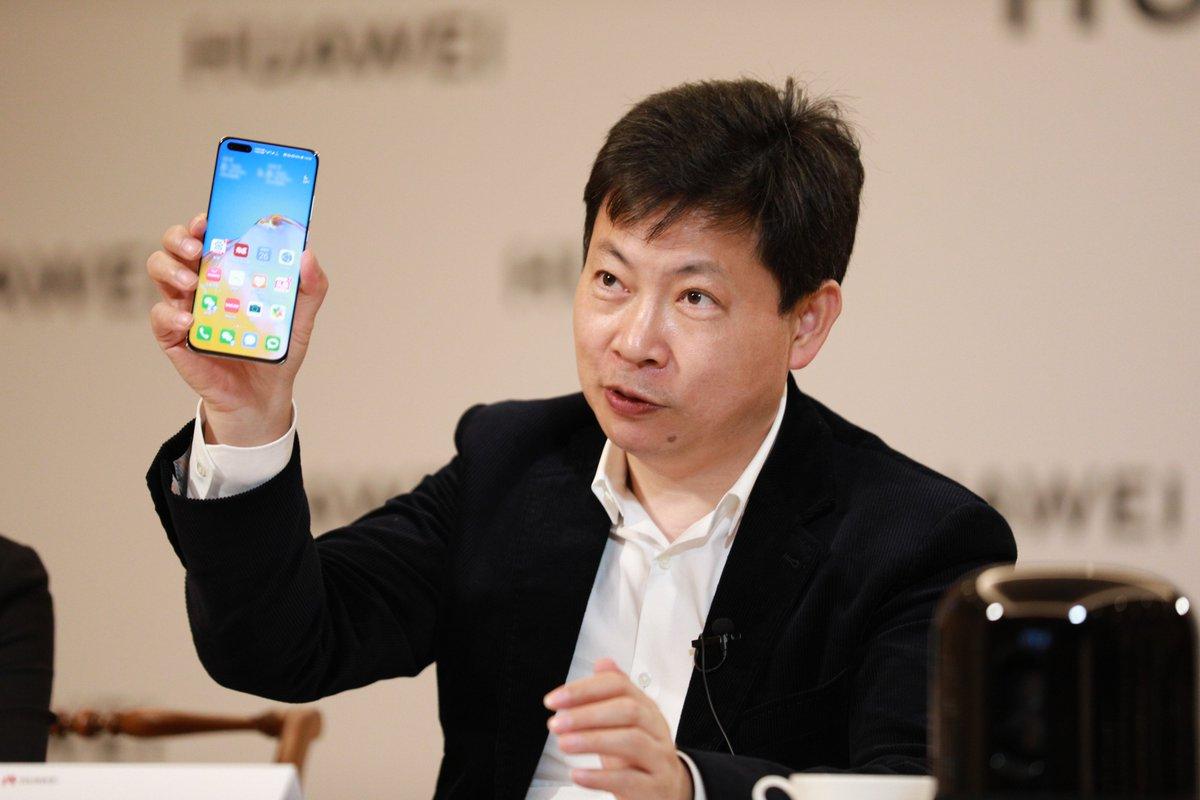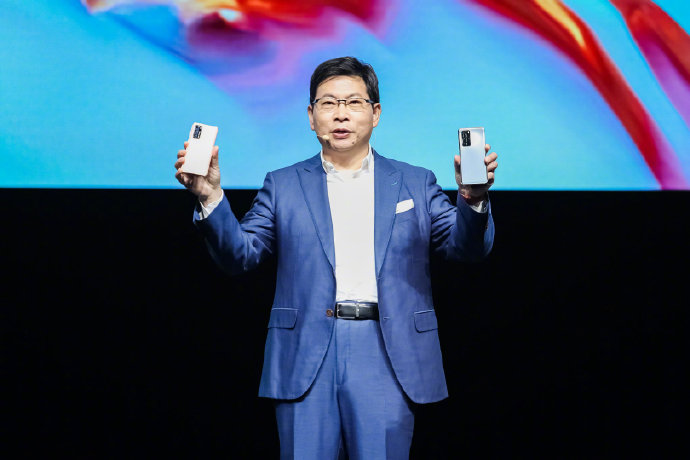News
Report: Here’s why Huawei assigning the spectacular smartphone chief to cloud business

It was recently reported that Huawei’s consumer business group chief – Yu Chengdong AKA Richard Yu will work as the head of Huawei Cloud and Computing BG, which will be officially announced in February 2021.
Meanwhile, Huawei internally announced that Richard Yu AKA Yu Chengdong, who’s currently serving as CEO of Consumer BG will be appointed as new President of Cloud and AI BG, director of Cloud & AI BG administrative management team. On the other hand, Hou Jinlong present President of Cloud and Computing BG will be the Chairman of Digital Energy.
Till now, this is the rarest thing happening in the history of Huawei that three major businesses will now be managed by one official.
Now, what are the main intention of Huawei behind this decision? Let’s talk about this matter in this article.
What is the current status of Huawei Cloud?
Since 2017, Huawei established its Cloud and computing BG, which has been currently in a state of big but not strong. It is reported that Huawei’s cloud and computing BG includes three parts: Cloud BU, computing product line (servers, etc.), and storage and machine vision product line. But this is one of the businesses that Huawei will focus on moving forward.
However, the Huawei executives’ goal of catching up with Ali Cloud in three years has long passed the time limit. Now, Huawei is expected that after the cloud and computing BG is handed over to Yu Chengdong, there may be new breakthroughs.
Huawei’s definition of the cloud and computing BG organization is the goal is to be responsible for the competitiveness and commercial success of the Huawei cloud and computing industry, and to undertake R&D, marking, ecological, technical sales, consulting as well as integration enabling services in the cloud and computing industry responsibility. To Build an ecosystem around Kunpeng, Shengteng, Huawei Cloud, as well as become the foundation of the digital world.
The current situation of Huawei, the revenue of cloud and computing BG is still not very satisfactory. Since the establishment of the cloud business unit, Huawei has never announced the specific revenue of this business in the financial report, but only mentioned the growth of the business in the semi-annual report for the first half of 2020.
Although Huawei’s entry into the game is not too early, it has achieved fruitful results under a series of measures. According to a report by the research institute Canalys, China’s cloud infrastructure services totaled US$4.3 billion in the second quarter of 2020, a year-on-year increase of 70%.
Huawei Cloud ranked second with a market share of 15.5% (behind Alibaba Cloud), a year-on-year increase of 259.6%. In the fast-developing cloud business track, Huawei Cloud is driving at super high speeds in recent years
Ren Zhengfei pointed out that Huawei’s corporate business said we must focus on strategic priorities, continue to subtract, shrink corporate business as a battle line, and carefully figure out how to make a combat model. “We must do something, not do something, and not do everything.”
Under various backgrounds, it is not difficult to see that Huawei is ready to start adjustments on Huawei Cloud in order to seek greater breakthroughs, and Yu Chengdong’s personnel adjustments are clearly to achieve greater ambitions and better development of Huawei Cloud.
Ren Zhengfei’s, Huawei CEO says after the miracle of consumer BG, whether Yu Chengdong can continue to replicate this success in cloud and computing BG will face no small internal and external tests.
However, Richard likely to also keep the command of the consumer business group but an official clearance on this matter is yet to come.
The purpose behind the personnel adjustment?
Insiders of Huawei said that the purpose of Huawei’s personnel adjustment is to strengthen the collaboration between the mobile phone-based end and cloud computing, further improve internal operation efficiency, further integrate core capabilities, strengthen Internet business layout, and promote a complete ecosystem development.
Huawei Cloud has previously supported consumer BG business at the business level and provided cloud services for Huawei mobile phone users, but the organizational structure is two sets of teams. Now Yu Chengdong is in charge of cloud and mobile phones, which can theoretically promote cloud integration better.
In this regard, industry insiders also said that Huawei’s chess game is constantly being adjusted, and this time the changes are bolder and the purpose is more obvious that is to continuously eliminate barriers, integrate to create new growth poles, and coordinate cloud and end to occupy new consumption scenarios. ”
It is worth noting that Yu Chengdong is also in charge of the car BU business. The car is regarded as another smart terminal with the most imaginative space after smartphones. By stringing these services together, Huawei can find that the “cloud service” is the base that will carry the HMS, Hongmeng OS (HarmonyOS), consumer cloud services, and smart car cloud services to form a closed loop of ecosystem + business.
Some media also analyzed from a series of Huawei’s layouts that Huawei Hongmeng focuses on the Internet of Everything, which is a bonus to IoT. The future direction of Huawei Cloud will support this strategic route, providing infrastructure for apps in the Internet of Everything direction. The ticket is in the cloud, and the decisive victory lies in the application ecosystem.
“In the future, with the blessing of 5G, the manufacturing industry will become intelligent and the Internet of Things will require a lot of IT facilities. Obviously, new outlets have emerged. In the future, it is very likely that Alibaba Cloud will lead the development of the Internet field in China, and Huawei Cloud will lead The two strongest IT facilities required for manufacturing and AIoT.” Many industry insiders also have this judgment.
How far can Yu Chengdong lead Huawei Cloud?
As we all know is that Yu Chengdong is a member of Huawei. Since joining Huawei in 1993, Yu Chengdong has served successively as president of the wireless product line, president of the European region, president of strategy and marketing, chairman of the terminal company, and CEO of consumer BG. Under his leadership, Huawei’s wireless and terminal departments have achieved Larger grades.
In particular, Huawei’s consumer business has achieved rapid development under the leadership of Yu Chengdong and has become the largest revenue contribution department among operator BG, enterprise BG, cloud and AI BG, and consumer BG.
Despite the high pressure of the US ban in the past two years, Huawei’s consumer business has still delivered satisfactory results. Huawei’s 2019 financial report shows that in 2019, consumer business revenue was 467.3 billion yuan, accounting for 54.4% of total revenue, a year-on-year increase of 34%, and smartphone shipments exceeded 240 million units. In the first half of 2020, Huawei achieved a sales revenue of 454 billion yuan and a consumer business revenue of 255.8 billion yuan.
Under the leadership of Yu Chengdong, Huawei mobile phones surpassed many strong opponents. In the second quarter of 2020, the global market share of Huawei mobile phones surpassed Samsung for the first time, ranking first in the global market for the first time. Also fulfilled his long-cherished wish for many years.
This time, Yu Chengdong has taken the command to serve as the president of cloud business and computing BG, which will also strengthen the collaboration of BG’s internal business.
At the same time, Yu Chengdong’s experience in Huawei’s consumer business, especially experienced in building consumer cloud services, and end-cloud collaboration capabilities, will help the development of Huawei’s cloud business and take it to the next level while keeping the smartphone business.








